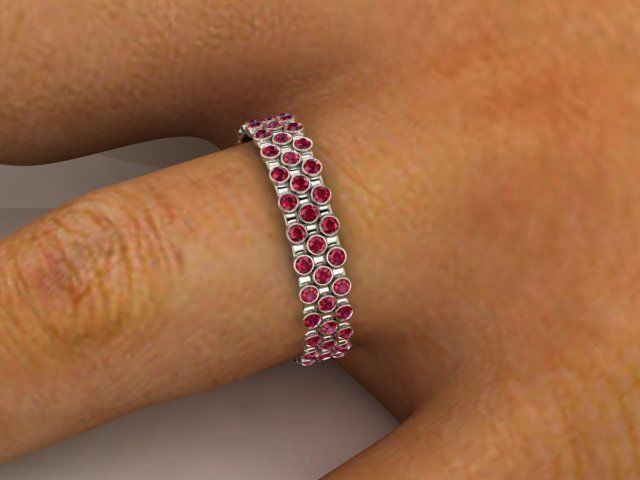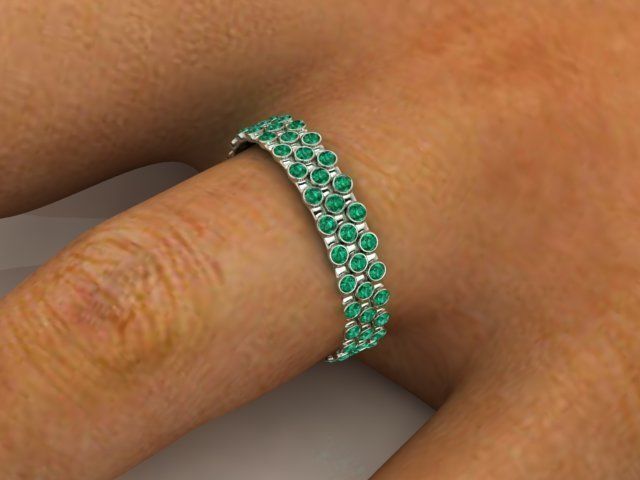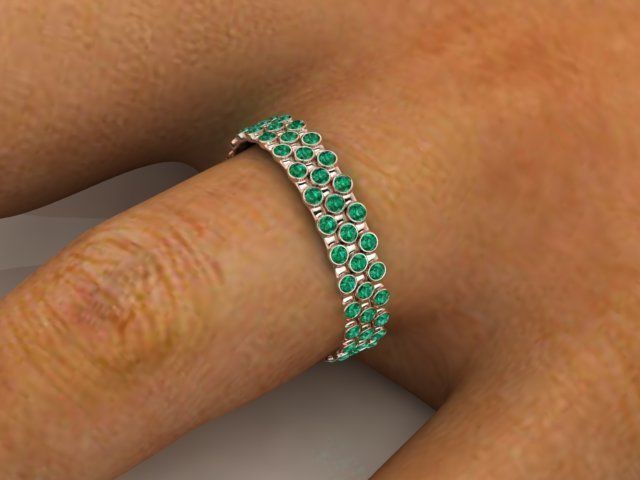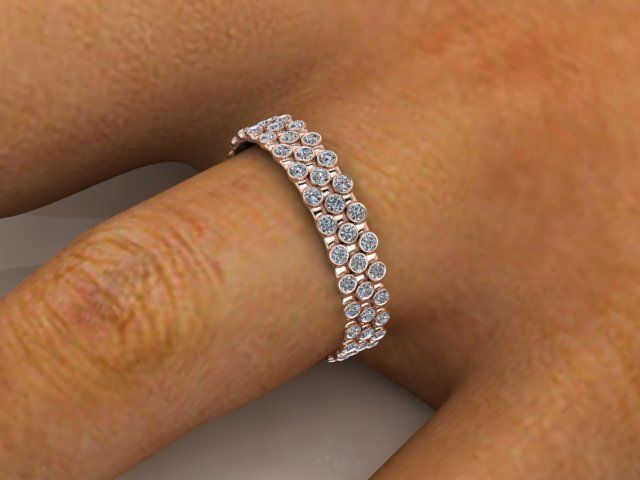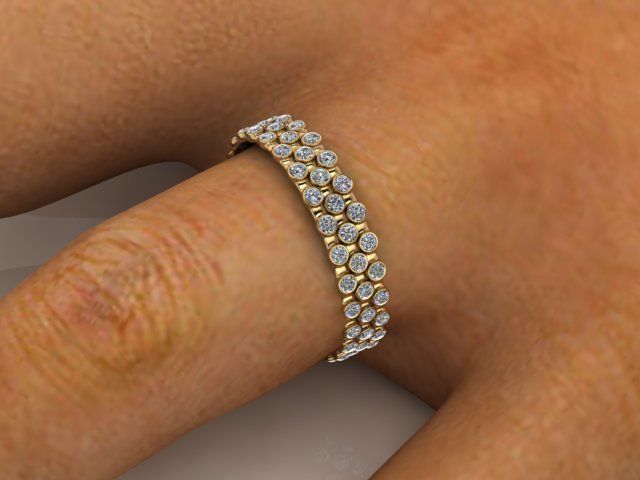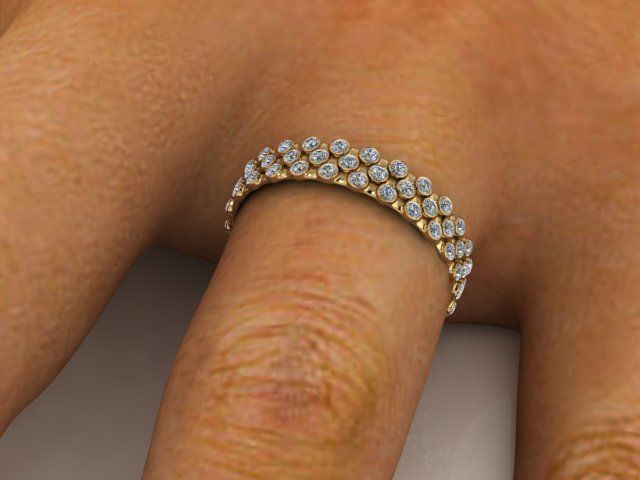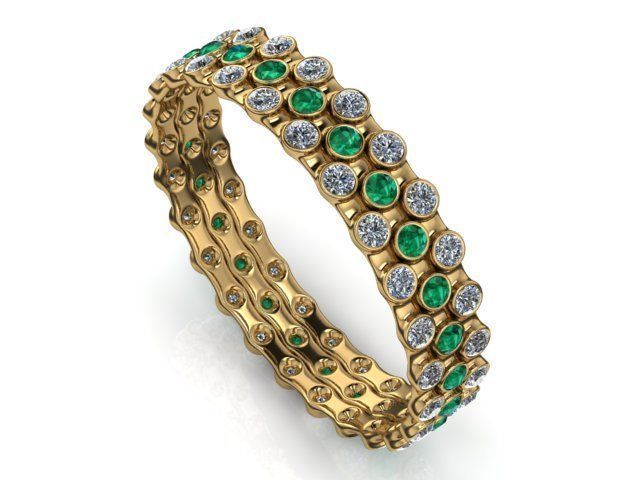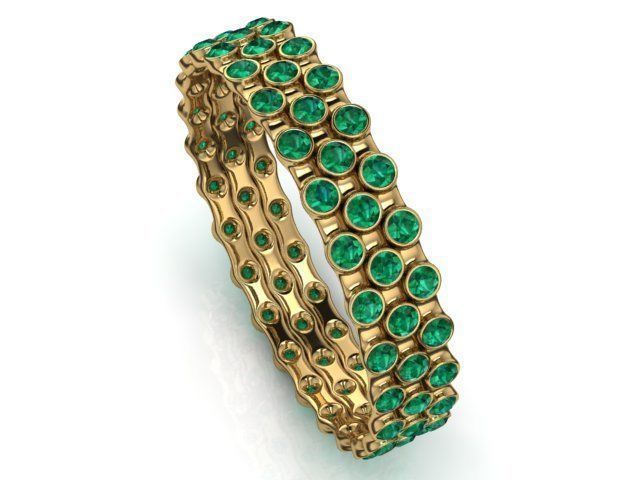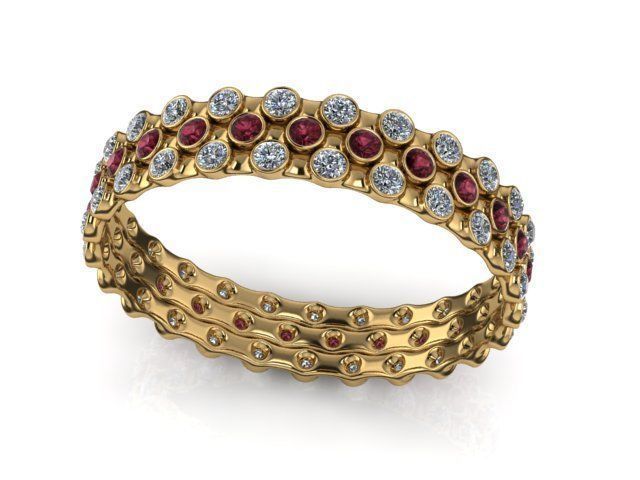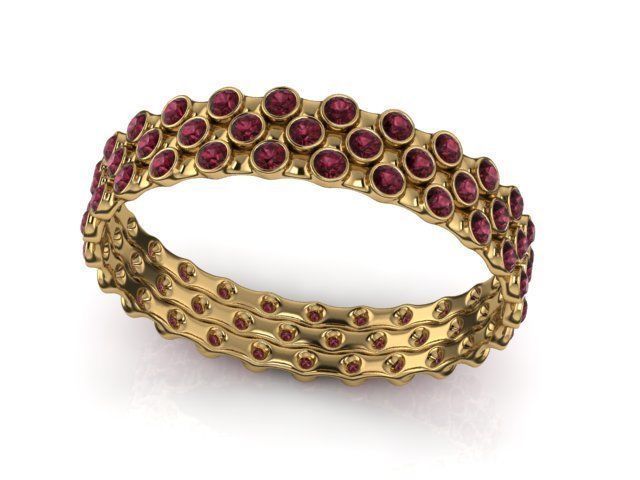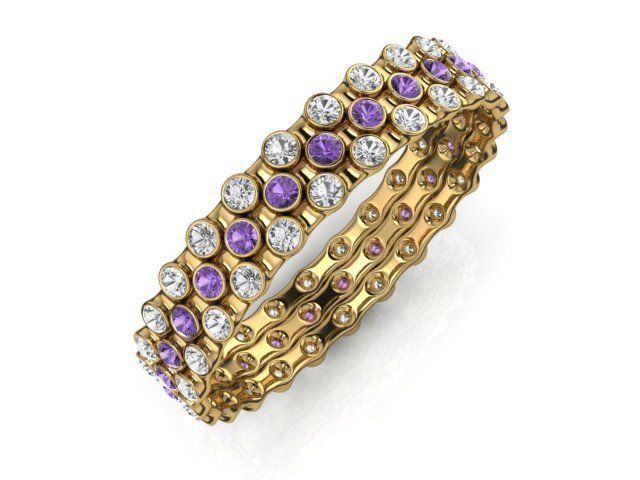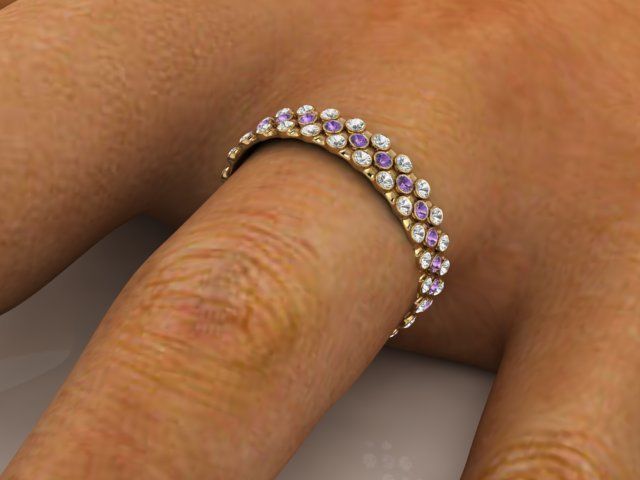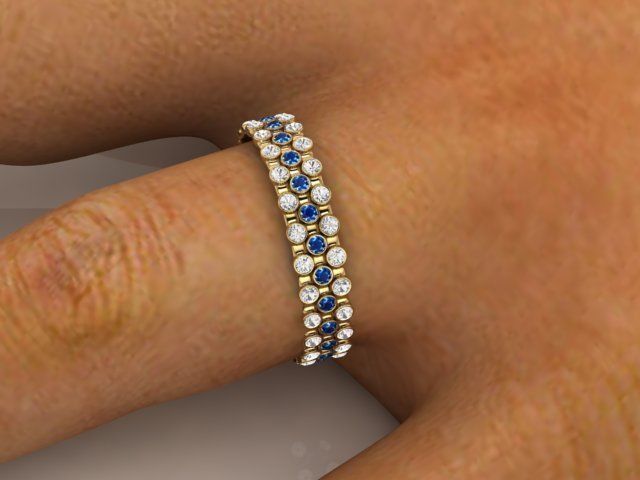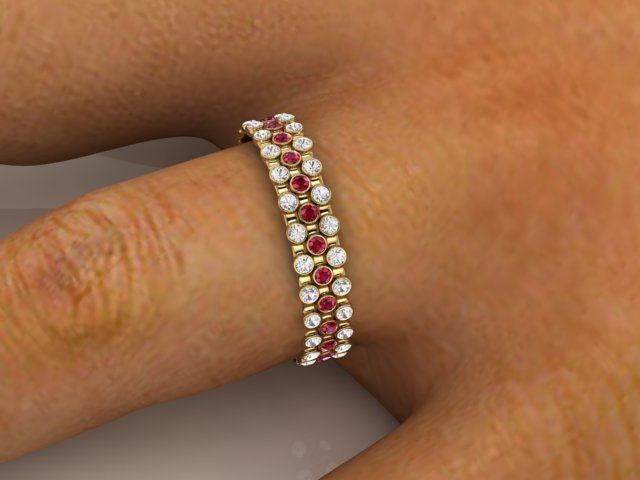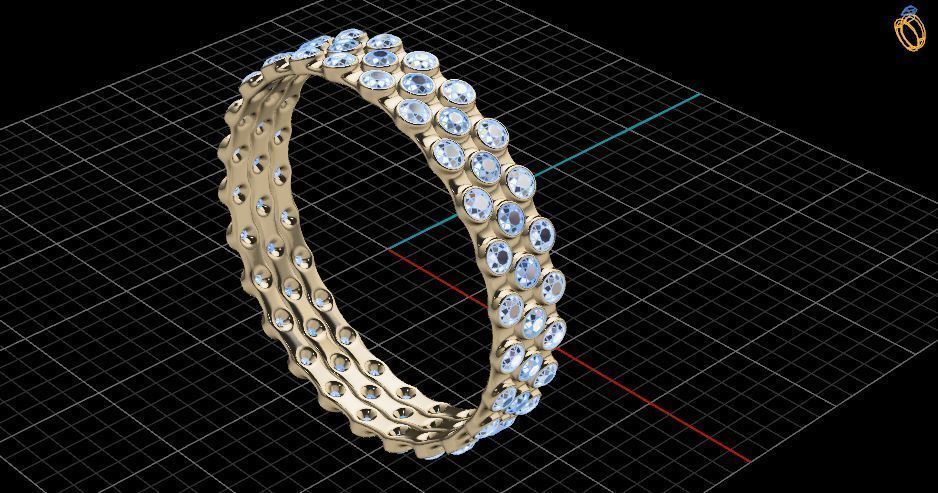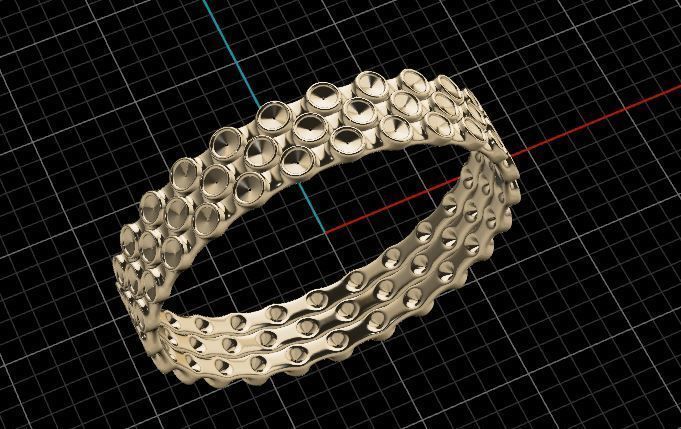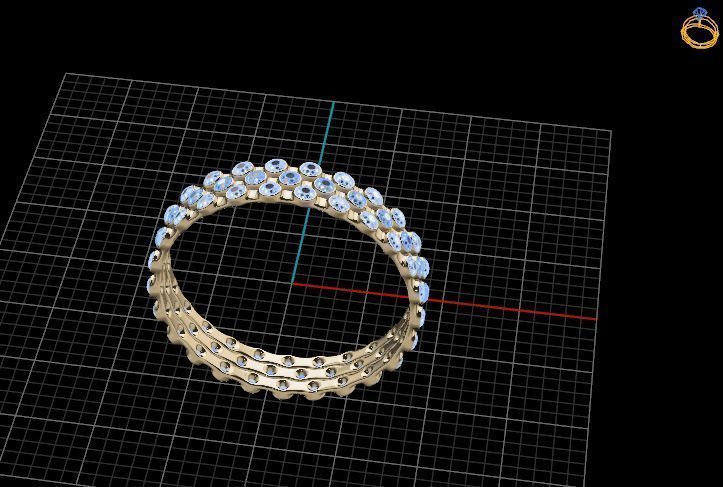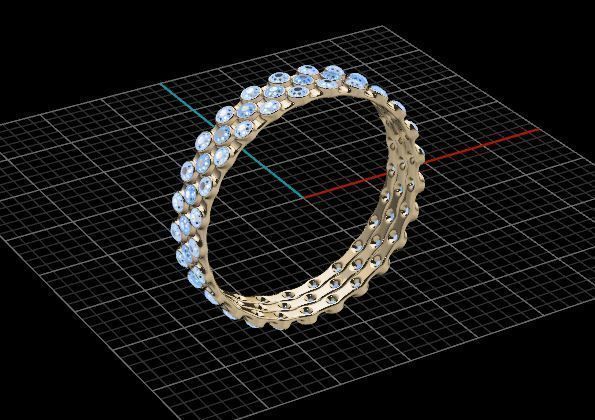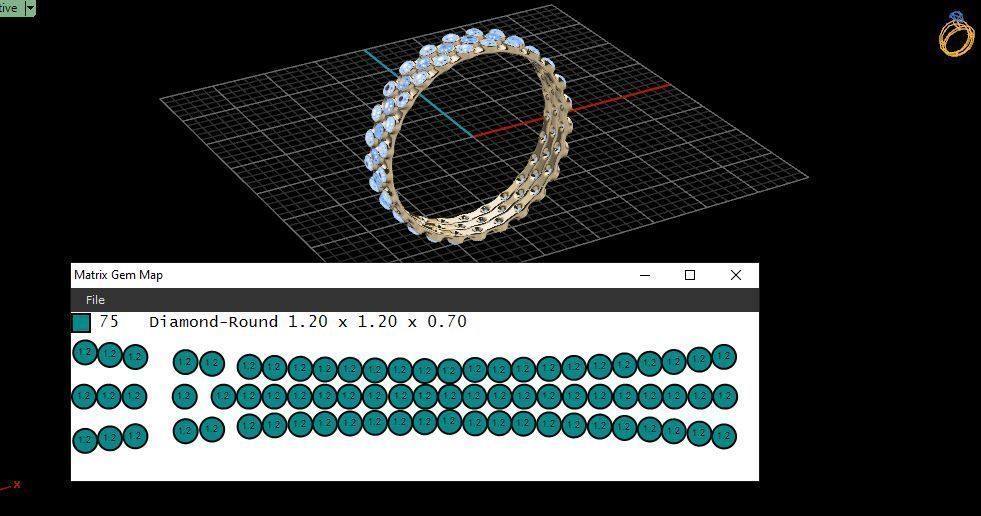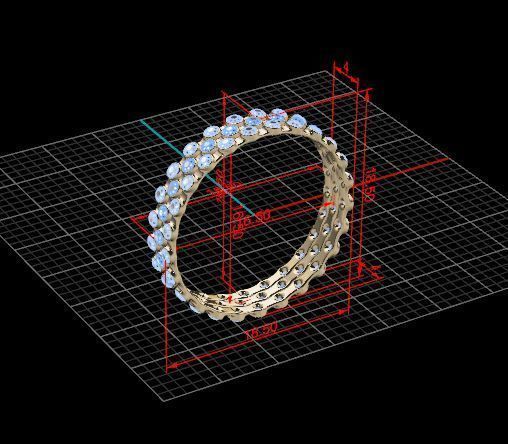
Fshion Ring 3D print model
A ring is a round band, usually made of metal, worn as ornamental jewelry. The term ring by itself always denotes jewellery worn on the finger; when worn as an ornament elsewhere, the body part is specified within the term, e.g., earrings, neck rings, arm rings, and toe rings. Rings always fit snugly around or in the part of the body they ornament, so bands worn loosely, like a bracelet, are not rings. Rings may be made of almost any hard material: wood, bone, stone, metal, glass, gemstone or plastic. They may be set with gemstones (diamond, ruby, sapphire or emerald) or with other types of stone or glass.Although some people wear rings as mere ornaments or as conspicuous displays of wealth, rings have symbolic functions respecting marriage, exceptional achievement, high status or authority, membership in an organization, and the like. Rings can be made to sport insignia which may be impressed on a wax seal or outfitted with a small compartment in which to conceal things.Jewellery (or jewelry in American English) consists of decorative items worn for personal adornment, such as brooches, rings, necklaces, earrings, pendants, bracelets, and cufflinks. Jewellery may be attached to the body or the clothes. From a western perspective, the term is restricted to durable ornaments, excluding flowers for example. For many centuries metal such as gold often combined with gemstones, has been the normal material for jewellery, but other materials such as glass, shells and other plant materials may be used.Jewellery is one of the oldest types of archaeological artefact – with 100,000-year-old beads made from Nassarius shells thought to be the oldest known jewellery.[1] The basic forms of jewellery vary between cultures but are often extremely long-lived; in European cultures the most common forms of jewellery listed above have persisted since ancient times, while other forms such as adornments for the nose or ankle, important in other cultures, are much less common.Jewellery may be made from a wide range of materials. Gemstones and similar materials such as amber and coral, precious metals, beads, and shells have been widely used, and enamel has often been important. In most cultures jewellery can be understood as a status symbol, for its material properties, its patterns, or for meaningful symbols. Jewellery has been made to adorn nearly every body part, from hairpins to toe rings, and even genital jewellery. In modern European culture the amount worn by adult males is relatively low compared with other cultures and other periods in European culture.The word jewellery itself is derived from the word jewel, which was anglicised from the Old French jouel,[2] and beyond that, to the Latin word jocale, meaning plaything. In British English, Indian English, New Zealand English, Hiberno-English, Australian English, and South African English it is spelled jewellery, while the spelling is jewelry in American English.[3] Both are used in Canadian English, though jewellery prevails by a two to one margin. In French and a few other European languages the equivalent term, joaillerie, may also cover decorated metalwork in precious metal such as objets d'art and church items, not just objects worn on the person.An engagement ring, also known as a betrothal ring, is a ring indicating that the person wearing it is engaged to be married, especially in Western cultures. A ring is presented as an engagement gift by a partner to their prospective spouse when they propose marriage or directly after a marriage proposal is accepted. It represents a formal agreement to future marriage. In most Western countries, engagement rings are worn mostly by women, and rings can feature diamonds or other gemstones. The neologism mangagement ring is sometimes used for an engagement ring worn by men. In some cultures, including Northern Europe, both partners wear matching rings, and engagement rings may also be used as wedding rings. In the Anglosphere, the ring is customarily worn on the left hand ring finger, but customs vary considerably elsewhere across the world. Historically, engagement rings are blessed and then worn during the betrothal ceremony of a couple, but neither the engagement ring nor any other ring is worn at the time when the wedding ring is put by the groom on the finger of the bride as part of the marriage ceremony, and sometimes by the bride onto the groom's finger. After the wedding, the engagement ring is usually put back on and is usually worn on the outside of the wedding ring. In the present-day, the giving of the engagement ring constitutes the subarration.The history of Egyptian bracelets is as old as 5000 BCE. Starting with materials like bones, stones and woods to serve religious and spiritual interests. From the National Geographic Society, the Scarab Bracelet is one of the most recognized symbols of ancient Egypt. The scarab represented rebirth and regeneration. Carved scarabs were worn as jewelry and wrapped into the linen bandages of mummies. Myth told of the scarab god, Khepri, pushing the sun across the sky.In 2008, Russian archaeologists from the Institute of Archaeology and Ethnology of Novosibirsk, working at the site of Denisova Cave in the Altai Mountains of Siberia, uncovered a small bone fragment from the fifth finger of a juvenile hominin, dubbed the X woman (referring to the maternal descent of mitochondrial DNA),[1] or the Denisova hominin. Artifacts, including a bracelet, excavated in the cave at the same level were carbon dated to around 40,000 BP.In Bulgaria, there is a tradition called martenitsa, which sometimes involves tying a red and white string around the wrist to please Baba Marta in order for spring to come sooner.In Greece, a similar tradition, weaving a bracelet from a red and white string on the first day of March and wearing it till the end of summer, is called Martis and is considered to help protect the wearer's skin from the strong Greek sun.In some parts of India, the number and type of bangles worn by a woman denotes her marital status[2]In Sikhism, an iron bracelet is one of the most mandatory articles known as the Five Ks.In Latin America, Azabache Bracelets are worn to protect against the Mal de ojo, or evil eye. The evil eye is believed to result of excessive admiration or envious looks by others. Having newborn babies wear an azabache (a gold bracelet or necklace with a black or red coral charm in the form of a fist), is believed to protect them from the evil eye.

